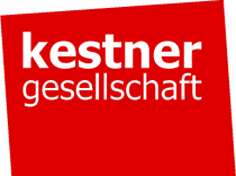Aleatory Structures
December 1, 2018–February 3, 2019
Goseriede 11
30159 Hanover
Germany
Hours: Tuesday–Sunday 11am–6pm,
Thursday 11am–8pm
With the exhibition Aleatory Structures, the Kestner Gesellschaft is presenting an extensive survey exhibition by the South American artist Teresa Burga (*1935 in Iquitos, Peru). For the first time in Germany, the past 50 years of her oeuvre will be presented with over 100 works. Burga’s life’s work is characterized by an extraordinary diversity, spanning paintings, Pop Art objects, sculptures, cybernetic installations, and drawings. Her work is also shaped by an analytical approach throughout the creative process, which manifests for instance in mathematical models and diagrams that she uses to deconstruct traditional gender roles as well as artistic authorship. Although Burga was often ahead of her time, in many cases she has been overlooked. The exhibition also seeks to contribute to finally establishing the artist’s position in the art-historical canon alongside other artists of her generation such as Martha Rosler and Hanne Darboven.
The title of the exhibition Aleatory Structures reflects the seemingly paradoxical juxtaposition of radical subjectivity and an almost scientific need for measurement in her work. An example of this is the work Autorretrato. Estructura. Informe. 9.6.72 (1972), a complex installation of drawings, photographs, and cardiograms for which Burga underwent a series of medical tests in order to create the most precise portrait possible. The abundance of data on display causes the artist’s body to dematerialize and completely withdraw from the male gaze directed at the female body. In her later series, she once again draws on the colorful aesthetics of Pop Art and increasingly questions the importance of artistic authorship—for instance, when she presents her reproductions of children’s drawings alongside the originals (2013–2014).
After studying art in Lima (1962–1964), Teresa Burga received a Fulbright scholarship in 1968, which enabled her to study for two years at the Art Institute of Chicago. There she worked intensively on experimental and conceptual art as a student of Claes Oldenburg. During this time she developed an interest in computers and information technology. She began to use theories of communication as a starting point for her work as an artist. After her return to her native country of Peru, which was ruled by a nationalist military dictatorship that left little room for free artistic work, she was forced to earn her living through other means. From this point on, Burga worked in the customs office, a job that fit with her affinity for mathematics, structures, and organization.
The works in the exhibition repeatedly demonstrate Teresa Burga’s interest in communication, especially in the transmission and effects of information. With construction manuals for apparatuses, instructions, diagrams, and drawings of newspaper articles, she provides visitors with an abundance of data and facts.
She also experiments with reducing art and poetry down to the basic structures of the information they contain. At the same time, she often precisely documents the production process and thus develops a form of subjectivity that is expressed in a constant reflection on her own role as an artist.
Teresa Burga’s works have long been neglected both in Germany and internationally, partly due to the political and economic conditions in her native Peru. The exhibition at the Kestner Gesellschaft ties in with the growing criticism of a Eurocentric art history and the demand for a reassessment of female artists in particular. Aleatory Structures is loosely linked to previous presentations by other artists, including Rochelle Feinstein and Christa Dichgans—both female artists who had to wait many years before they were discovered and discussed by a broader audience.
Teresa Burga lives and works in Lima, Peru. Her work has been shown in numerous solo and group exhibitions around the world at venues including the Hammer Museum in Los Angeles (2017), the Sculpture Center in New York (2017), Tate Modern in London (2015), MALBA in Buenos Aires (2015), the Museum Ludwig in Cologne (2015), the Art Institute of Chicago (2015), the Venice Biennale (2015), the Sala de Arte Público Siqueiros in Mexico City (2014), the Palais des Beaux-Arts in Brussels (2014), the Museu de Arte Moderna do Rio de Janeiro (2014), the Istanbul Biennial (2012), and the Württembergischer Kunstverein in Stuttgart (2011).
The exhibition and catalog were realized in cooperation with the Migros Museum of Contemporary Art in Zurich.
The exhibition is supported by the Stiftung Niedersachsen and the friends of the Kestner Gesellschaft.
Curators: Christina Végh and Lea Altner
Also on show:
Nevin Aladağ, Part 2: Social Fabric



